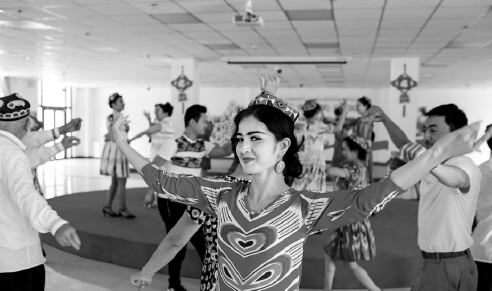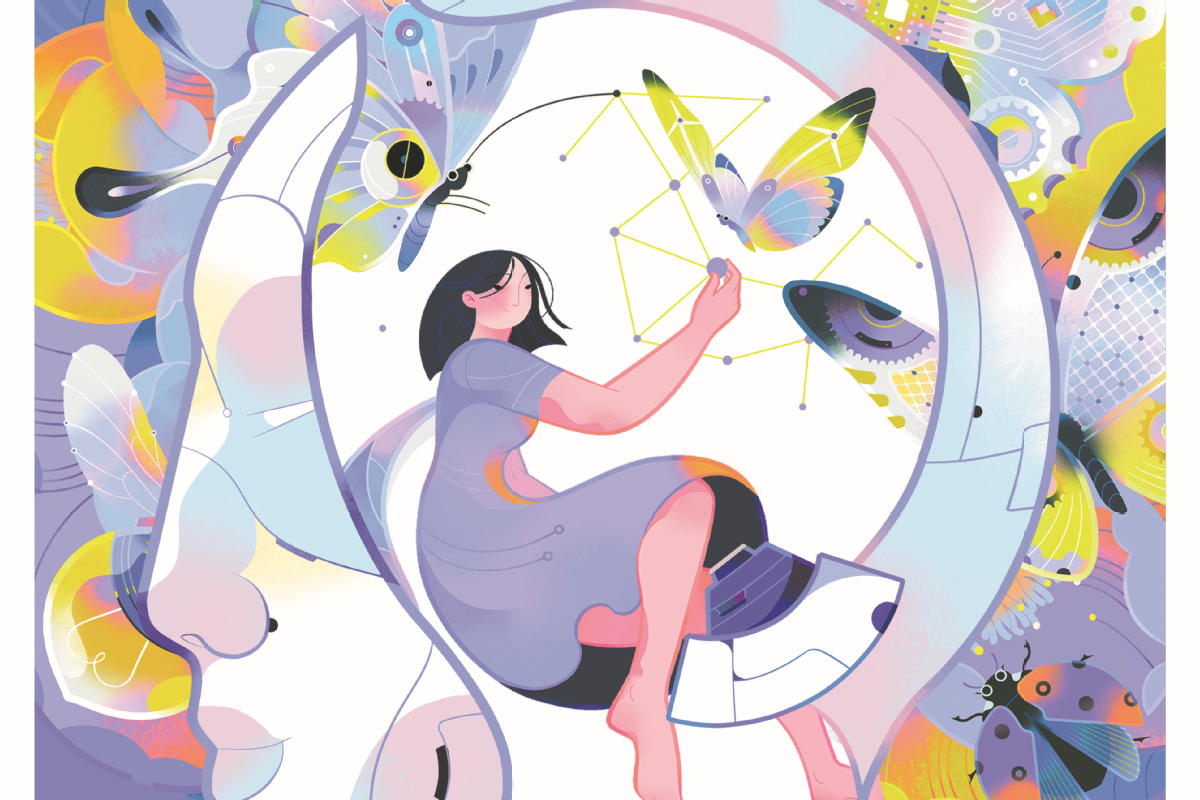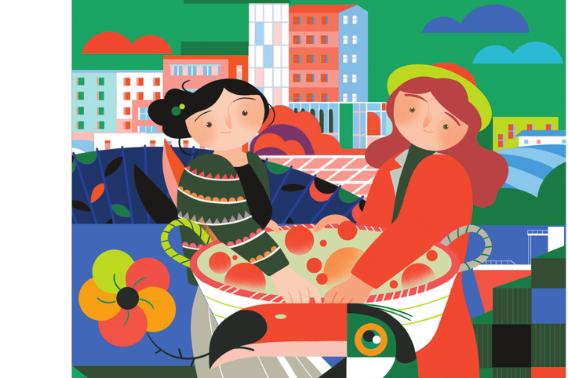Cultural protection and development in Xinjiang


Editor's Note: The State Council Information Office of the People's Republic of China published a white paper titled "Cultural Protection and Development in Xinjiang" on Thursday. Following is the full text of the white paper:
Contents
Preamble
I.Xinjiang Ethnic Cultures Are Part of the Chinese Culture
II.The Spoken and Written Languages of Ethnic Groups Are Widely Used
III.Respecting and Protecting Religious Culture
IV.Protecting and Carrying Forward Cultural Heritage
V.Constant Development of Cultural Undertakings and the Cultural Industry
VI.Active Cultural Exchanges with Other Countries
Conclusion
Preamble
China is a unified multi-ethnic country. In the course of a civilization that dates back more than 5,000 years, the various ethnic groups of China have created a long history and a splendid culture. Since ancient times many ethnic groups have made their way to Xinjiang, and it has become their home and a place for cultural integration. Various ethnic cultures of Xinjiang have their roots in the fertile soil of Chinese civilization, advancing their own cultural development while enriching the overall culture of China.
Since the People's Republic of China was founded in 1949, the Chinese government has attached great importance to documenting and protecting the excellent traditional ethnic cultures in Xinjiang, and ensuring that they are passed on to succeeding generations. It has promoted creative transformation and innovative development, encouraging these ethnic groups to learn spoken and written languages from each other, promoted communication and integration, respected their freedom of religious belief, and worked to develop their cultural undertakings and industries. The government has worked to modernize ethnic cultures, to strengthen cultural exchanges with foreign countries, and to enhance each group's cultural confidence while engaging in exchanges with and mutual learning from others.
I. Xinjiang Ethnic Cultures Are Part of the Chinese Culture
Since ancient times, Xinjiang has been home to various ethnic groups, where different ethnic cultures coexist. Through many years of communication and integration, these cultures thrive in the fertile soil of China's civilization and are part of the Chinese culture.
Ethnic cultures make up an inseparable part of the Chinese culture. Since ancient times, China has been multicultural as a result of the diversity of its environment. Different ethnic cultures have communicated and integrated with each other, constituting a legacy shared by the Chinese nation that has brought into being a splendid Chinese culture.
As early as in the pre-Qin period (c. 2100-221 BC), Xinjiang was in close contact with the Central Plains. Archaeological excavations demonstrate that painted potteryware unearthed in Xinjiang shows the influence of the Yangshao Culture in the middle reaches of the Yellow River, while many articles made from Xinjiang's Hetian jade were unearthed in the Shang-dynasty (c.1600 BC-1046 BC) Tomb of Fu Hao in Anyang, Henan in central China. After the Western Han (206 BC-AD 25) united Xinjiang, Chinese became one of the official languages used in government documents of the Western Regions where Xinjiang is located. Agricultural production techniques, the system of etiquette, Chinese-language books, music, and dances of the Central Plains spread widely in the Western Regions. Musical instruments and music from the Western Regions were introduced to the Central Plains and exerted a great influence on local music. The treasure house of Chinese culture boasts elements of the Uygur Muqam, the Kazak Aytes art, the Kirgiz epic Manas, the Jangar epic of the Oirat Mongols, and many other great cultural works of various ethnic groups.
Different cultures have long coexisted in Xinjiang. China's historical evolution has determined that various ethnic groups live together. They are economically interdependent and embrace each other's cultures. The unique natural environment and geographical conditions in Xinjiang resulted in the development of refined oasis farming and grassland nomadism, and migrating ethnic groups with different lifestyles and working practices communicated with, complemented and integrated with each other, creating a dynamic coexistence of different cultures.
Around 20 different spoken and written languages have been identified in Xinjiang. The Sino-Tibetan, Altaic, and Indo-European languages still exist in Xinjiang today, and a traditional feature of Xinjiang culture is that different languages are used in daily life. It was common for different ethnic groups to borrow from and use each other's languages. The Kizil Thousand-Buddha Caves, Bezkilik Grottoes, Beiting Ancient City Site, and some other Xinjiang sites that integrate multiple cultural factors from the Han, Huihu (an ancient name for modern Uygur), Tubo (an ancient name for modern Tibetan) and other ancient residents of Xinjiang are typical of the culture and art of ancient China.
Historically Xinjiang was the gateway and medium through which the Chinese civilization opened to the West. The Silk Road opened a new chapter in cultural exchanges and integration between East and West. China's papermaking, sericulture, silk weaving, and other advanced technologies spread to the West via Xinjiang during the glory days of the Silk Road, exerting a far-reaching impact on world civilizations. Buddhism, Manichaeism and Nestorianism were introduced into Xinjiang through the Silk Road, and practiced together with primitive local religions. During Xinjiang's long historical evolution, it has always been a place where many religions have coexisted. The cultural landscape of Xinjiang has long been characterized by coexistence and communication between different cultures.
There is a long history of different ethnic cultures communicating and integrating with each other. The Chinese culture is a bond that unites various ethnic groups, while in the course of daily life and work, the communication between and integration of different ethnic cultures has helped to form and develop the Chinese culture. Influenced by the culture of the Central Plains, Xinjiang learned and rapidly developed sericulture and silk weaving. The Huihu culture that originated in the Mobei (the area north of the vast deserts on the Mongolian Plateau) regime was deeply influenced by the nomadic culture of northern China, Central Plains culture, Buddhism and Manichaeism. In different stages of history, various ethnic groups learned from each other, resulting in the emergence of a number of statesmen, writers, artists, historians, agronomists, and translators who made further contribution to the development of the ethnic cultures of Xinjiang in the embrace of the Chinese culture. After the People's Republic of China was founded in 1949, and under the leadership of the Communist Party of China (CPC), the ethnic cultures of Xinjiang entered a new period of prosperity and development. Our Motherland Is a Garden, Xinjiang, a Good Place and other classic songs are heard around the country; Visitors on the Icy Mountain, Uncle Kurban Visits Beijing and other quality films have become widely known. They are elements of a cultural wealth that has been created by and is shared by all ethnic groups.
The ethnic groups of Xinjiang live together, study together, work together, and share happiness. They influence, assimilate and integrate with each other in language, diet, costume, music, dance, painting, architecture and other aspects of social life, culture and art. A common feature of these ethnic cultures is that all are interrelated.
































